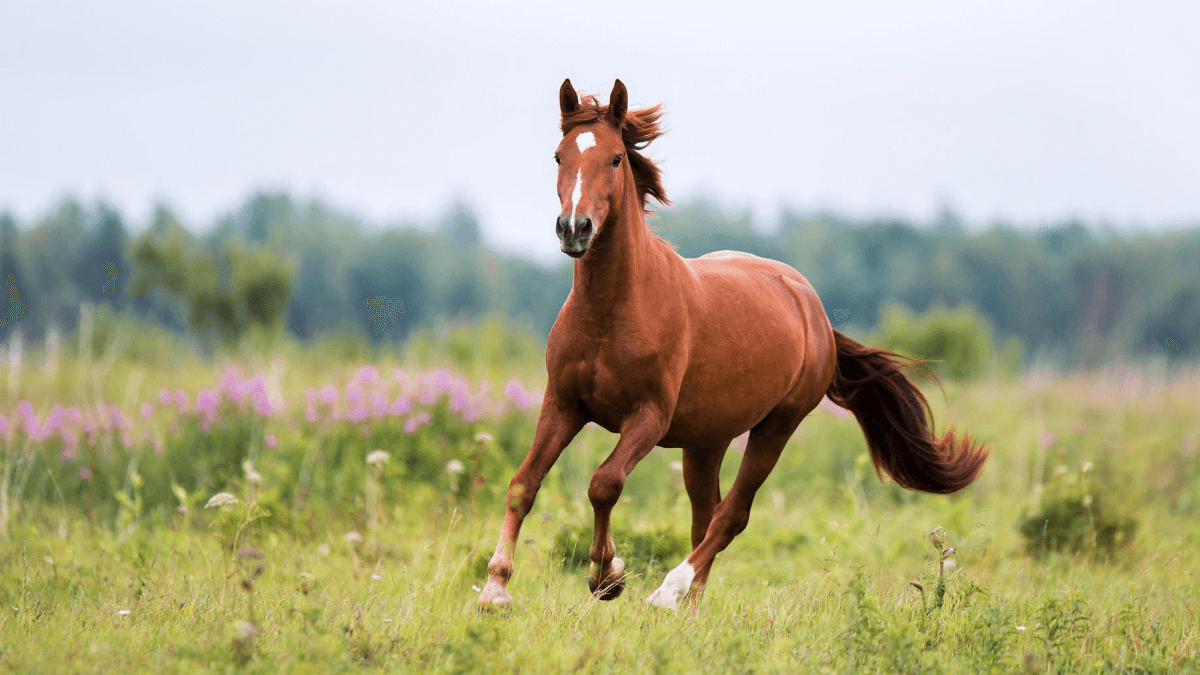Innovative India: Success through dairy business engagement
India is the largest dairy market in the world, with over 300 million cows and buffaloes, facilitating many fascinating opportunities for the sector. Speaking at the Alltech ONE Virtual Experience, Shrirang Sarda, CEO of the Sarda Group shared with our audience how an engagement-based perspective of doing business in India has worked for his dairy venture, Sarda Farms.
About Sarda Group and Sarda Farms
The Sarda Group began 99 years ago as a startup with three workers producing inexpensive cigarettes. Now, Sarda Group is one of India's most reputable firms, with more than 25,000 team members across six verticals. Its diverse business includes Sarda Farms, a pioneer in the dairy industry in India.
Sarda Farms has differentiated itself based on quality and delivers antibiotic-free, hormone-free milk in glass bottles directly to customers’ doors. This project is the brainchild of Shrirang Sarda, who grew up in the business, getting involved in the IT department from the eighth grade, and then succeeding his father as CEO at the young age of 25. He has continued the successful growth of the business, moving into new markets and a new age.
Insights
The dairy venture started in the late 90s, early 2000, as a part of the company’s vision to diversify. At first, it seemed like a good opportunity to make profit. However, there was discomfort with the quality of the product.
Ten years later, Sarda reassessed the business, and his criteria for choices were more refined. The company developed a more institutional view as an organization; its vision was clearer.
“It was more about fulfilling a need in the market — or need in the environment, actually, more than a market — and rather than just chasing market share,” noted Sarda. “And that kind of helped us not see it as an exploitative opportunity but more as an exploration of what can be done, what needs to be done. It’s evident that engagement really matters.”
The company started to recognize the importance of engagement. It observed that in the areas of business where it underperformed, it lacked an element of engagement.
Goals, strategy and results
There were several gaps in the market to be addressed through an engagement-based perspective:
1. The whole supply chain was not optimized: Cold chain was non-existent in the first and the last mile of transportation. As a result, the milk coming into the dairy processing unit and the milk going to the house both had high bacteria loads.
2. There was a lack of high-quality milk: “Good milk was simply not available in India,” stated Sarda. “Even in 2010, nothing was right about the market and the product we looked at in the dairy business. The milk quality was just not right. Every household in India, virtually, boils the milk as soon as they receive it because the bacterial load is so high.”
3. There were many fundamental structural challenges: This is from the cow's productivity to feed sourcing to traceability of the milk. “It is also very easy to make spurious milk in terms of just drink the brand name of somebody else and add a white liquid and sell it,” said Sarda.
4. There was no service orientation: According to Sarda, this is a very large category, but there was no service, even though home delivery was available in most places in India.
“So, some sort of an agenda began to form in our heads based on the gaps we saw in the market,” said Sarda. The mission became clear: to produce good milk and provide a good service for India.
This was not an easy or inexpensive task. The milk quality depends on several factors, including how the milk is produced, packaged and delivered. This is where engagement came in to play through different facets:
- Milk quality: Sarda aspired to the EU or the U.S. standards, which were not met in India. “[Global standards] need not be the whole market, but it certainly should be a choice in India.” In the end, he used the European family farms model as a benchmark, as the corporate farms model in the U.S. was too large for them to apply to India at that time.
- Environmental and food safety needs:
- Packaging: Sarda Farms started using glass bottles because they are blemish-free, do not react with the milk and are reusable and environmentally friendly. Furthermore, it is easier to see if glass has been tampered with, so the consumer can be assured of the quality.
- Testing: Sarda Farms used engagement as a basis of transaction to substitute for the lack of institutional arrangements. “We do this in our own farms, simply because that institutional arrangement is missing,” said Sarda. “And we can't just send it to a lab and get it tested.”
- Supply chain: Sarda shared that “one big thing in this agenda that emerged for us was this whole idea of education of all the stakeholders and all the different elements that we interact within the supply chain.”
- Improving farm management: A farm manager from Holland was hired to make sure best practices from developed markets came to India. “And one side note here is, obviously, Alltech was hugely instrumental in educating us in turn,” said Sarda. “And we got a lot of technology transfer done to us and a lot of knowledge transferred onto us through Alltech.”
- Silage: Timely delivery was required so that silage can be made. Silage was not a common practice then, but it was important for Sarda Farms to have the right kind of maturity and synchronization of plantation dates across farmers.
- Cold chain: Because the need for cold chain was obvious, a cold chain was put in place even though it costs a lot more money. Delivery guys were required to understand the importance of cold chain in transportation, to the extent of what temperature is desired.
- Home delivery: This was a new element in India's dairy market, which worked well before and after COVID. The pandemic did not only increase awareness of hygiene and demand for higher quality, traceable milk, but also enhanced appreciation for milk delivery during the lockdowns.
- Customer needs: The target market segment was identified as the discerning customer, someone who would appreciate the added value and be willing to pay more for a premium product.
“The reason? So, because all these costs were stacked, if somebody did not value this offering, it would seem an extravagant or very luxury kind of offering, whereas we saw it as the bare necessity of having good milk,” explained Sarda. “And somebody who did not value it would think it too expensive.”
The strategy was to start with early adopters to establish a higher quality choice in the market, then influence the rest of the market later.
Despite being a small size business with no familiarity or experience in the industry, Sarda Farms has made a significant impact in India's dairy industry by addressing the gaps in the market and being engaged with customers and suppliers. “We’re only 10 years old,” said Sarda. “But we certainly have seemed to establish a new kind of offering and a new kind of choice in the market.”
Indicators of success
Sarda noticed changes in Indian regulation, copycat products in the market, and business opportunities during COVID times.
- Stricter institutional regulations for quality: “We've seen some changes in regulation in India,” noted Sarda. “Maybe not as much as we'd like to see, but some changes which are in the right direction. They're making it more stringent. Some new parameters have been added.”
- Appearance of copycats: Sarda shared that the biggest indicator showing they are doing well is that “many, many, many "me-too" products have been launched. And many people seem to be jumping on this good milk, farm-to-home model.”
- Trust and quick response time from suppliers and partners: Sarda Farms has conceptualized and launched three different products, all post-COVID. Sarda credited this success to the trust-based ecosystem, in which suppliers and partners rose to the occasion, and negotiations can come after delivery. The high-end trust was a result of Sarda Farms’ good reputation and relationships with suppliers and partners.
- Word-of-mouth marketing: “Our experience has shown that if somebody tries our milk for a month, we have more than a 75% conversion rate at a reasonably premium-priced product in India,” explained Sarda. “And these are people who are not necessarily even seeking to buy a premium milk, but they know that they're unhappy with the milk they have. There are children at home, or there's somebody senior at home, or there is a patient at home suffering from some health issue or the other, and they need to get high-quality milk. And they look for it, and they ask their friends. And their friends refer us, and it has worked really well for us. It also gets us the right kind of people, who care about milk, instead of putting customers in some sort of a sales pipeline, where you may sell to them on the wrong basis. So, we are very clear that we want people who appreciate what we do, who value what we do, and the rest is easy. In a very B2B environment, I think it kind of works the same way, especially in an engaged business. But we wanted to do the same in a B2C environment.”
The key learning
Looking back on Sarda Farms’ journey for the past 10 years, Sarda believed engagement is a big part of Sarda Farms. “And that engagement seems to be the big reason why we're punching above our weight in this category,” Sarda said. “We're a teeny, tiny player. And despite our really small size, we've gotten disproportionate publicity, we've got a disproportionate position in this market, and we've got an extraordinary number of copycats. So that, to my mind, tells me that our impact is very high, despite our size. And I believe the real reason is engagement and how engaged and responsive we've been.”
Future implications
Sarda offered his insights and ideas to better cater to current and future consumers:
1. Create new products in response to customer needs: Sarda told a story of how his customers called to say they did not get unsalted butter in Bombay and asked Sarda Farms to make it for them. “And we had no idea how that was made or what kind of shelf life we would get. But within five days, we made the first batch of unsalted butter and sent it to the customers to try and give us some basic feedback on. And then eventually, a product was done.” Similarly, they created a new ghee product (stratified butter used in India for cooking) purely based on customer demand for high-quality ghee. “We are not too keen on doing product, per se, but we will do them if the customers so require.”
2. Pay attention to the shift in consumption habits: Sarda asserted this will happen in the larger food sector as well as the dairy industry. According to his entrepreneur friend, India can be segmented into three buckets:
- India One (about 22% of India) is everybody who has domestic help at home, whether part-time or full-time.
- India Two (about 50% of India) is the people helping India One, such as drivers, maids, cooks, restaurant staff.
- India Three is somebody else, like construction laborers and beauty workers.
India One is growing at a rate of 1% each year, which is a big growth in terms of the number of people. Interestingly, the children of India Two will likely grow up to become India One.
“To us, that was very attractive, that we saw India One fundamentally changing habits, becoming more demanding about what they wanted, in terms of how they see movies to what kind of food they consume to what kind of digital experiences they want or don’t want,” commented Sarda.
This is why Sarda is determined to cater to the present and the future by providing acceptable standards of milk and dairy, as well as the herd’s health and productivity in India.
3. Experiment and apply on-farm technologies
- Experiment on becoming a sensor-driven farm: “We experimented with a full range of sensors, for example, an ammonia sensor, which will detect if the farm is clean or not,” said Sarda. Sarda Farms also started with cow motion sensors. For example, to ensure animal welfare, they use an activity monitor for notifications of stresses from the cow. “When a cow is no longer productive, we ensure they go to a cow sanctuary where they can live the rest of their life in a relaxed way.” In addition, Sarda sees a lot of need for using newer hardware for sensors “to get the milk even more right and get the cow care even more right.”
- Applications on-farm, logistics and retail: On-farm, they are increasing the autonomy of the cow and calf. For logistics, they are looking at Bluetooth sensors for cows and thermal inks on their packaging to detect temperature quality. In retail, they are focused on engaging with and understating the shopper.
- Applications for sustainability: “Our entire farm runs completely on biogas energy,” said Sarda. “We also try to minimize and avoid plastic use and have optimized our routes to minimize distances traveled. We also strive to get the maximum efficiency from feed.”
4. It’s not just about technology: “We are also sensing that it's not just about tools and technology, but it's really about behavior,” Sarda noted. “And if you don't have the right practices and the behaviors in place, there's only so much that technology can help. And there's only so much that you can expect from the technology. So, at the moment, we are very focused on getting the analytical part going in the dairy business.”
Final thoughts
“I think challenges have always been there,” Sarda commented. “Epidemics have always been there. And certainly, in the short term, there is a fair amount of misery that comes in certain amounts of periods. There is this really wise, age-old saying — I believe it originates from Gautama Buddha — that this too shall pass and that nothing is permanent.
“And I see a lot of good signs. In India, for example, we had a huge problem of migrant laborers returning home in these COVID times, and the amount of compassion and empathy generated in India was unprecedented.”
To Sarda, COVID is a short blip, and we should continue to stay focused on what we can do, how we can solve problems and how we can contribute.
Visit one.alltech.com for more information.

<script charset="utf-8" type="text/javascript" src="//js.hsforms.net/forms/v2-legacy.js"></script>
<![endif]--><script charset="utf-8" type="text/javascript" src="//js.hsforms.net/forms/v2.js"></script><script>
hbspt.forms.create({
portalId: "745395",
formId: "1c790526-1f39-4ebc-bf3e-71b9c86fea92"
});
</script>
Shrirang Sarda, CEO of the Sarda Group shared with our audience how an engagement-based perspective of doing business in India has worked for his dairy venture, Sarda Farms.

















.jpg)









